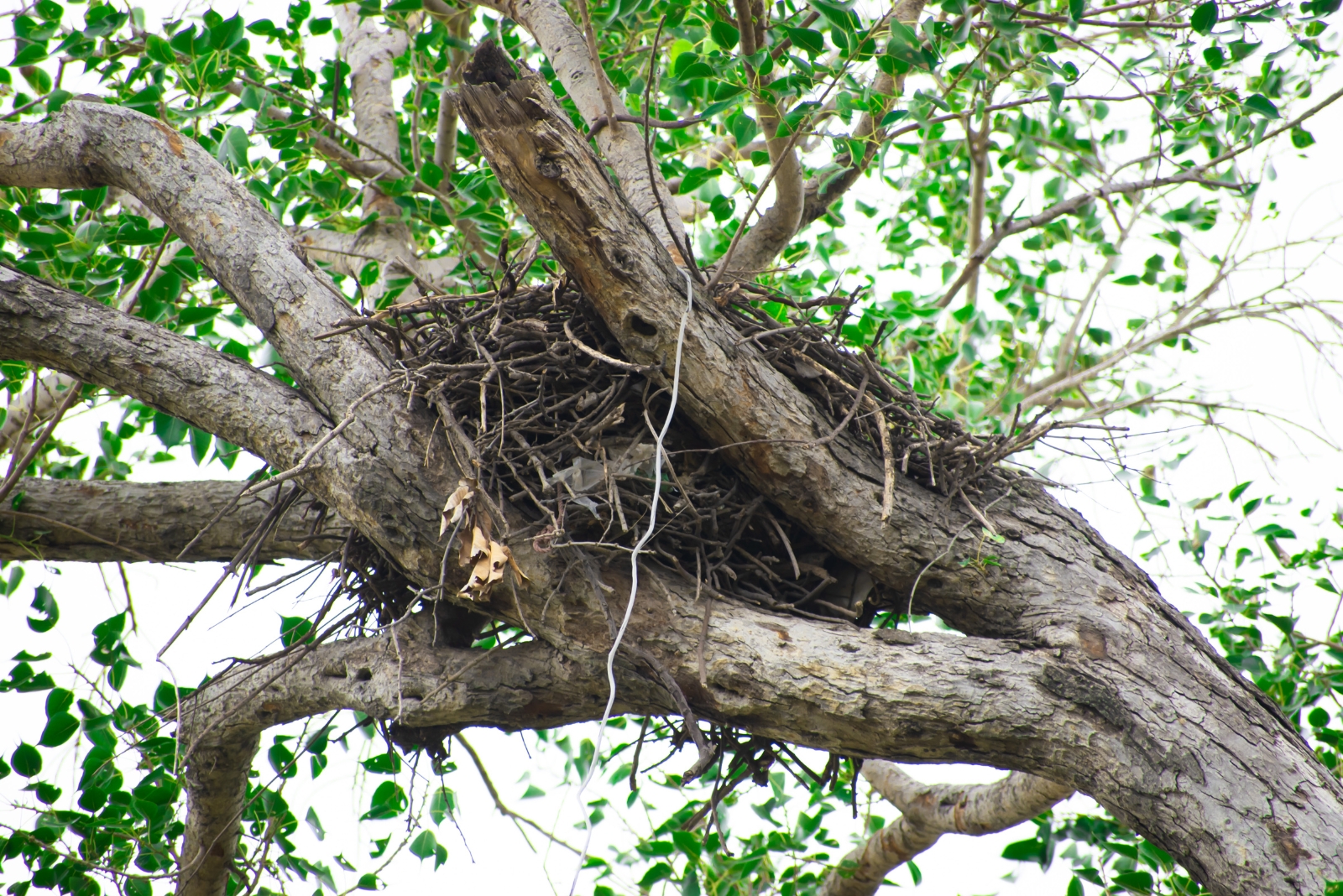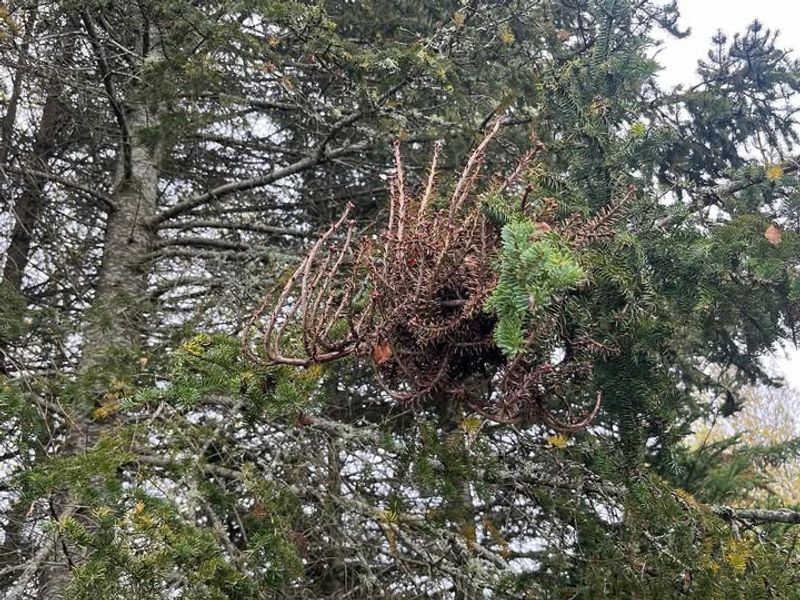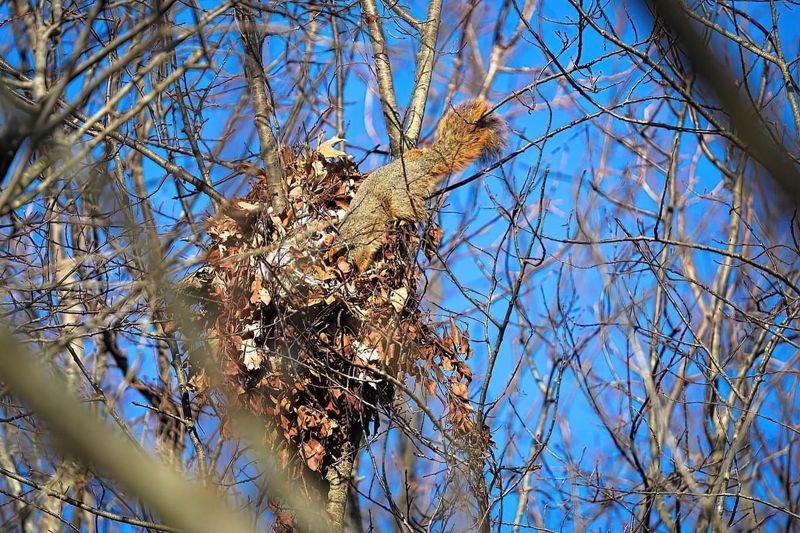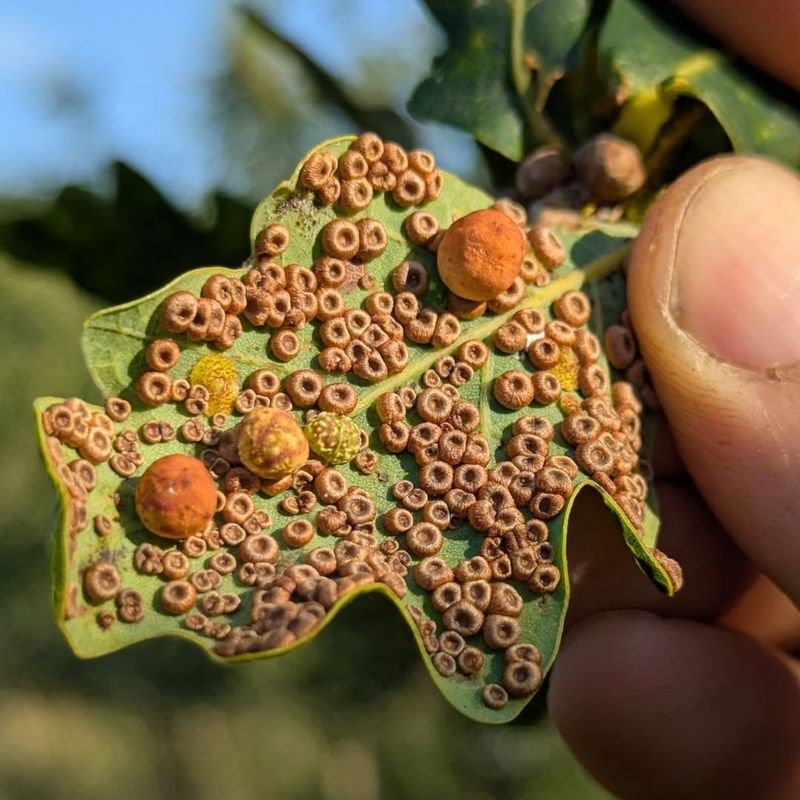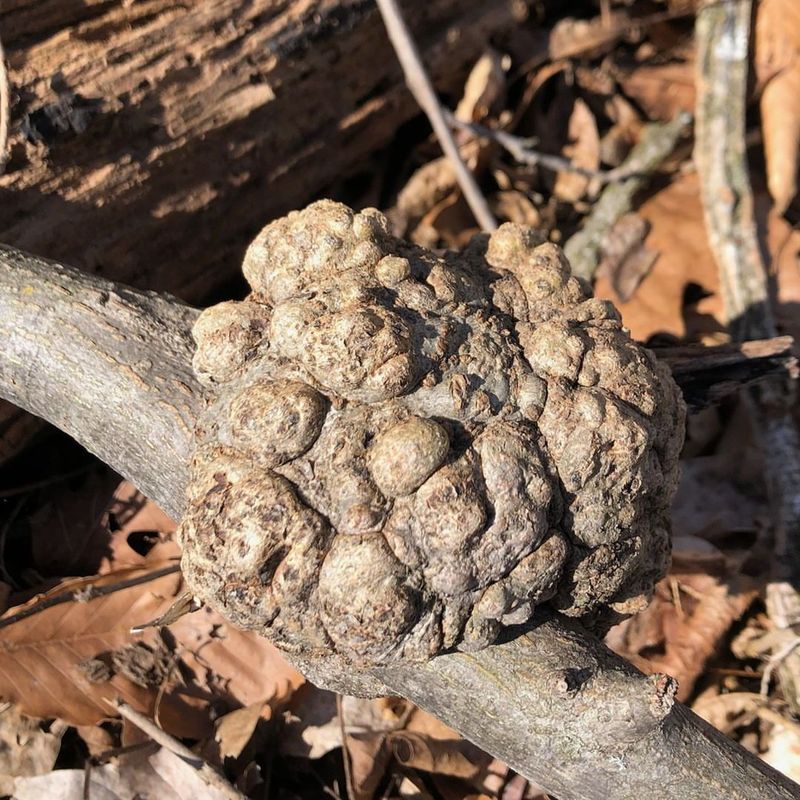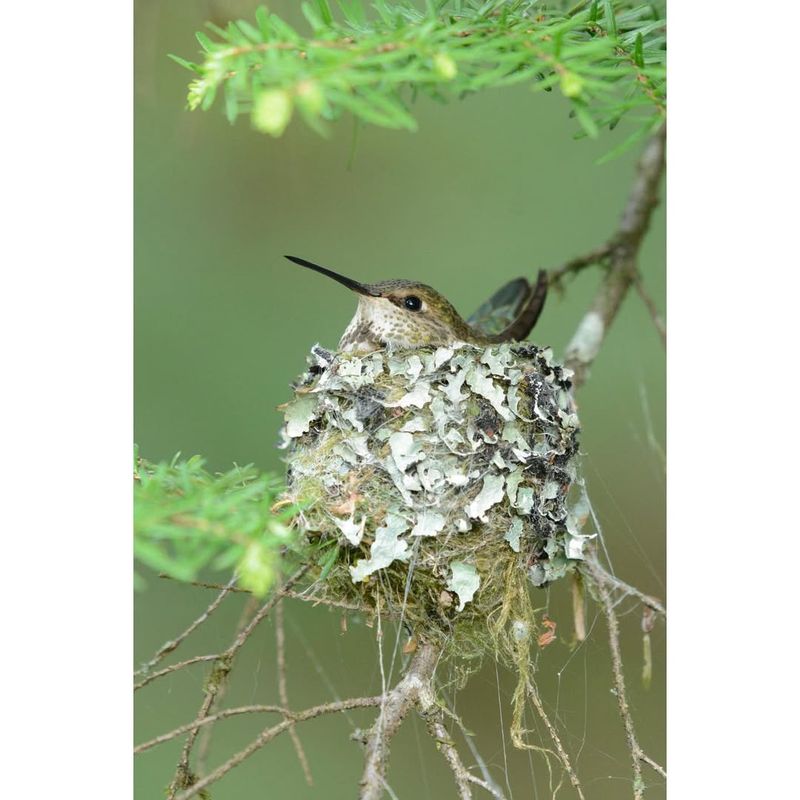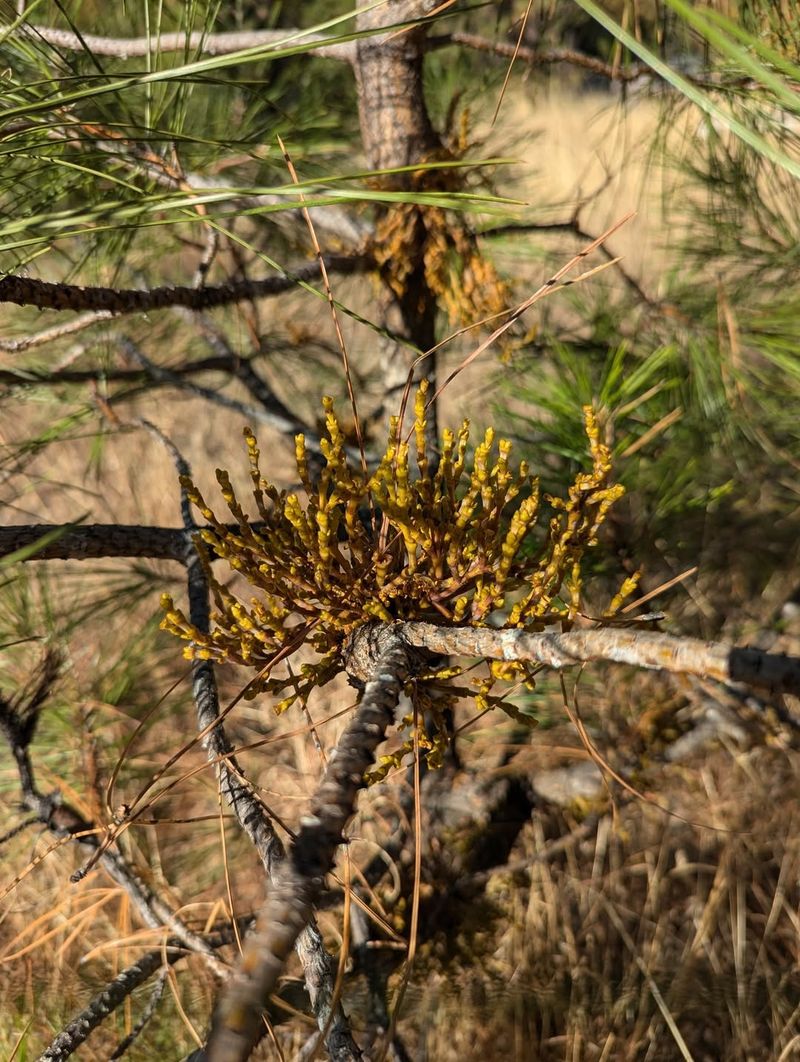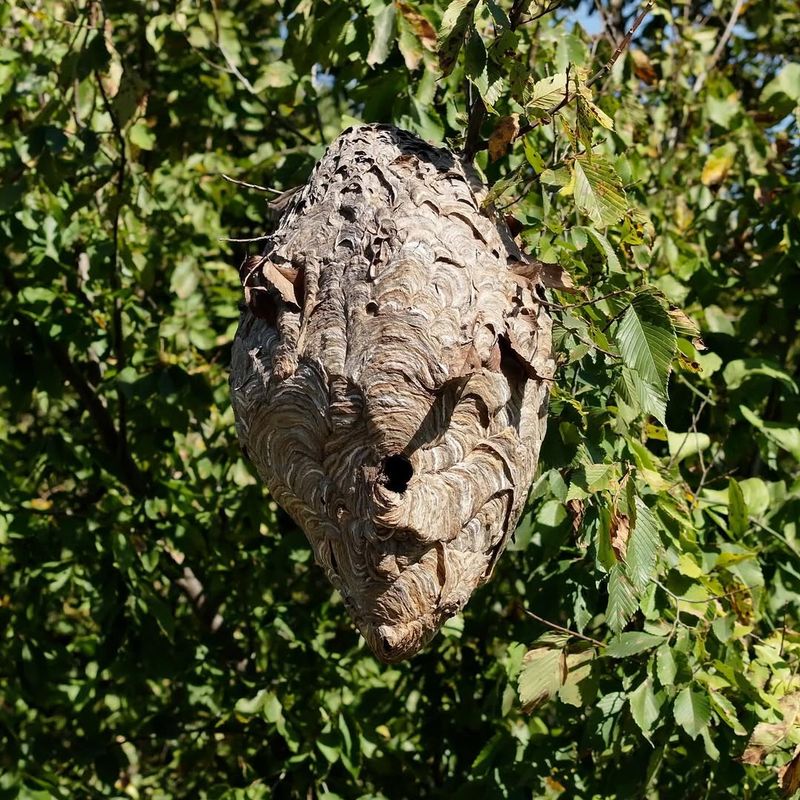Walking through your Oregon backyard, you spot what looks like a nest nestled in your favorite maple tree. Before calling wildlife services, take a closer look! Many tree formations mimic nests but serve completely different purposes in our Pacific Northwest ecosystem.
Understanding these differences can help you better care for your trees and the creatures that depend on them.
1. Witch’s Broom Growth
Those dense, tangled branches resembling an old-fashioned broom aren’t home to flying creatures, but rather a sign of stress in your tree. Caused by fungi, mites, or bacteria, these bristly formations redirect growth into tight clusters.
The good news? While unsightly, witch’s brooms rarely kill trees outright. In ancient folklore, these strange growths were believed to mark spots where witches had landed their flying brooms!
2. Squirrel Dreys
Unlike birds’ nests, squirrel homes (called dreys) are round, compact bundles typically built near the trunk where branches meet. Oregon’s native Douglas squirrels craft these leafy hideaways using shredded bark, moss, and twigs.
During winter, several squirrels might share a single drey for warmth. Look for telltale signs of activity: fallen nut shells below the tree or glimpses of fluffy tails disappearing into the round structure.
3. Gall Formations
Mother Nature’s weirdest tree decorations might be galls! When certain insects lay eggs in your tree, the plant tissue swells into strange shapes – sometimes resembling small nests or fruits.
Oregon white oaks often develop marble-sized oak galls that house tiny wasp larvae. Though alien-looking, most galls cause minimal harm to healthy trees. Some Native American tribes even used crushed oak galls to make ink and medicine.
4. Burl Growth
That gnarly, wart-like bump on your tree trunk isn’t housing baby birds – it’s a burl! These woody outgrowths develop when tree cells divide abnormally, creating swirling grain patterns treasured by woodworkers.
Pacific Northwest burls can grow massive over decades, sometimes reaching refrigerator size. While mysterious in origin, scientists believe injury, fungus, or environmental stress triggers these fascinating formations.
5. Hummingbird Hideaways
Easily overlooked, the tiny nests of Allen’s and Rufous hummingbirds—common Oregon visitors—are engineering marvels. No bigger than half a ping-pong ball, these thimble-sized homes blend perfectly with branches.
Built from spider silk, plant down, and lichen, these elastic nests expand as babies grow! Unlike typical bird nests, hummingbird homes look more like knots or bumps on branches, making them nearly invisible to untrained eyes.
6. Mistletoe Clusters
Romantic holiday decoration or tree parasite? In Oregon forests, dwarf mistletoe forms basket-like structures called witches’ brooms (different from the growth disorder) that resemble abandoned nests.
Growing on ponderosa pines and other conifers, these parasitic plants force trees to create dense branch clusters. While problematic for timber production, these formations create valuable wildlife habitat for flying squirrels, pine martens, and several bird species.
7. Hornet Masterpieces
Paper-like and perfectly round, bald-faced hornet nests hang like gray balloons from Oregon trees. Unlike bird nests, these insect apartments feature layered combs wrapped in protective paper shells made from chewed wood fiber.
Despite their frightening reputation, hornets actually help gardeners by controlling pest populations. A safe viewing distance is essential though – about 10 feet away. By winter, the colony dies off, leaving empty paper castles that eventually decompose.

